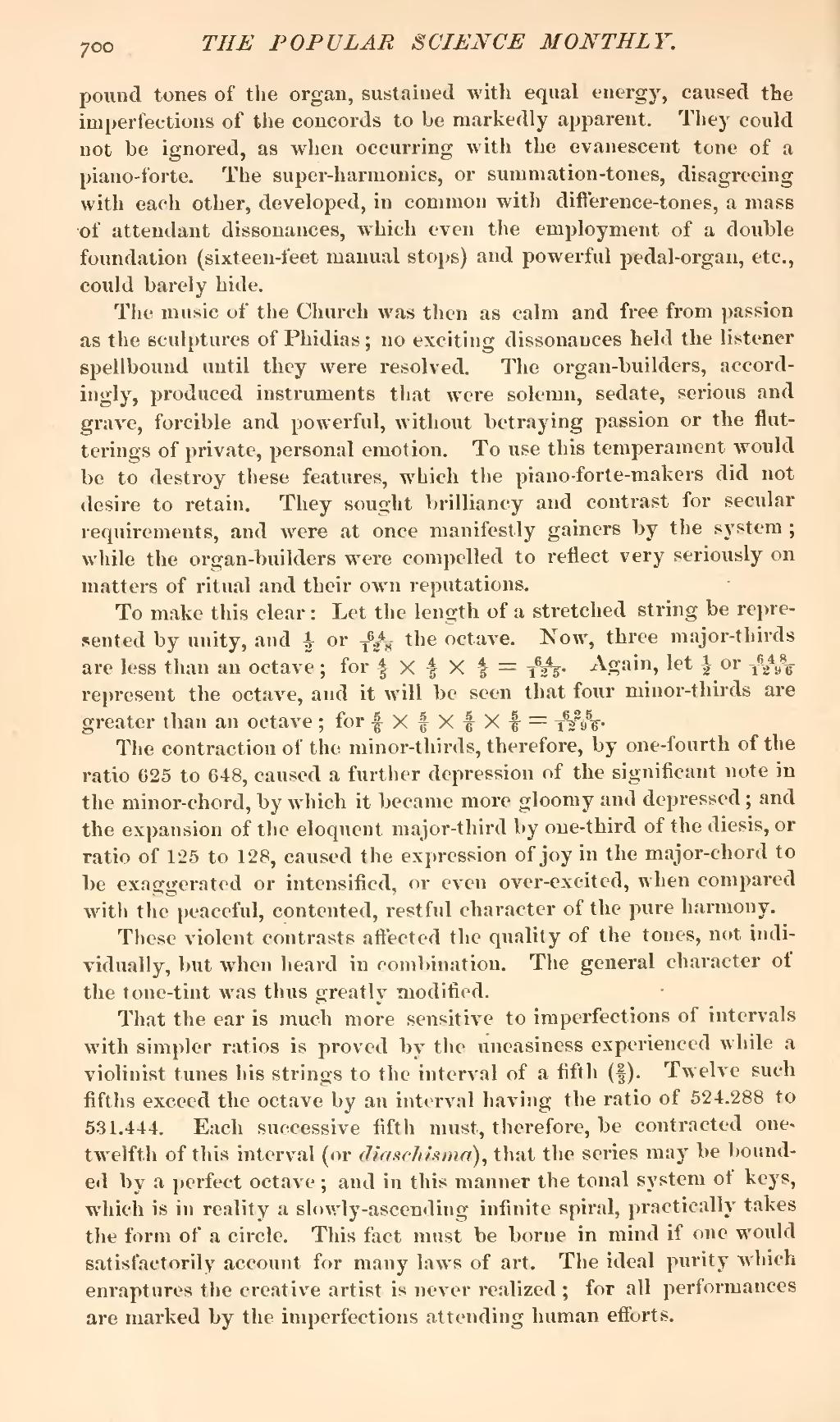pound tones of the organ, sustained with equal energy, caused the imperfections of the concords to be markedly apparent. They could not be ignored, as when occurring with the evanescent tone of a piano-forte. The super-harmonics, or summation-tones, disagreeing with each other, developed, in common with difference-tones, a mass of attendant dissonances, which even the employment of a double foundation (sixteen-feet manual stops) and powerful pedal-organ, etc., could barely hide.
The music of the Church was then as calm and free from passion as the sculptures of Phidias; no exciting dissonances held the listener spellbound until they were resolved. The organ-builders, accordingly, produced instruments that were solemn, sedate, serious and grave, forcible and powerful, without betraying passion or the flutterings of private, personal emotion. To use this temperament would be to destroy these features, which the piano-forte-makers did not desire to retain. They sought brilliancy and contrast for secular requirements, and were at once manifestly gainers by the system; while the organ-builders were compelled to reflect very seriously on matters of ritual and their own reputations.
To make this clear: Let the length of a stretched string be represented by unity, and 12 or 64128 the octave. Now, three major-thirds are less than an octave; for 45 45 45 64125. Again, let 12 or 6481296 represent the octave, and it will be seen that four minor-thirds are greater than an octave; for 56 56 56 56 6251296.
The contraction of the minor-thirds, therefore, by one-fourth of the ratio 625 to 648, caused a further depression of the significant note in the minor-chord, by which it became more gloomy and depressed; and the expansion of the eloquent major-third by one-third of the diesis, or ratio of 125 to 128, caused the expression of joy in the major-chord to be exaggerated or intensified, or even over-excited, when compared with the peaceful, contented, restful character of the pure harmony.
These violent contrasts affected the quality of the tones, not individually, but when heard in combination. The general character of the tone-tint was thus greatly modified.
That the ear is much more sensitive to imperfections of intervals with simpler ratios is proved by the uneasiness experienced while a violinist tunes his strings to the interval of a fifth (23). Twelve such fifths exceed the octave by an interval having the ratio of 524.288 to 531.444. Each successive fifth must, therefore, be contracted one-twelfth of this interval (or diaschisma), that the series may be bounded by a perfect octave; and in this manner the tonal system of keys, which is in reality a slowly-ascending infinite spiral, practically takes the form of a circle. This fact must be borne in mind if one would satisfactorily account for many laws of art. The ideal purity which enraptures the creative artist is never realized; for all performances are marked by the imperfections attending human efforts.



